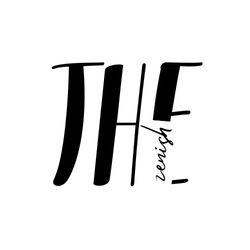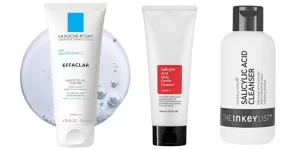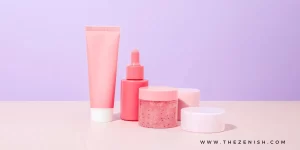
Wondering about those black dots on your breasts?
They’re called blackheads, and they’re a type of acne that can happen anywhere on your body.
But don’t worry, you’re not alone, they’re way more common than you might think.
Many people struggle with blackheads on their breasts, especially if they have oily skin, hormonal changes, or sweat a lot.
The good news is that you can eliminate them with a few simple tips and tricks or medication.
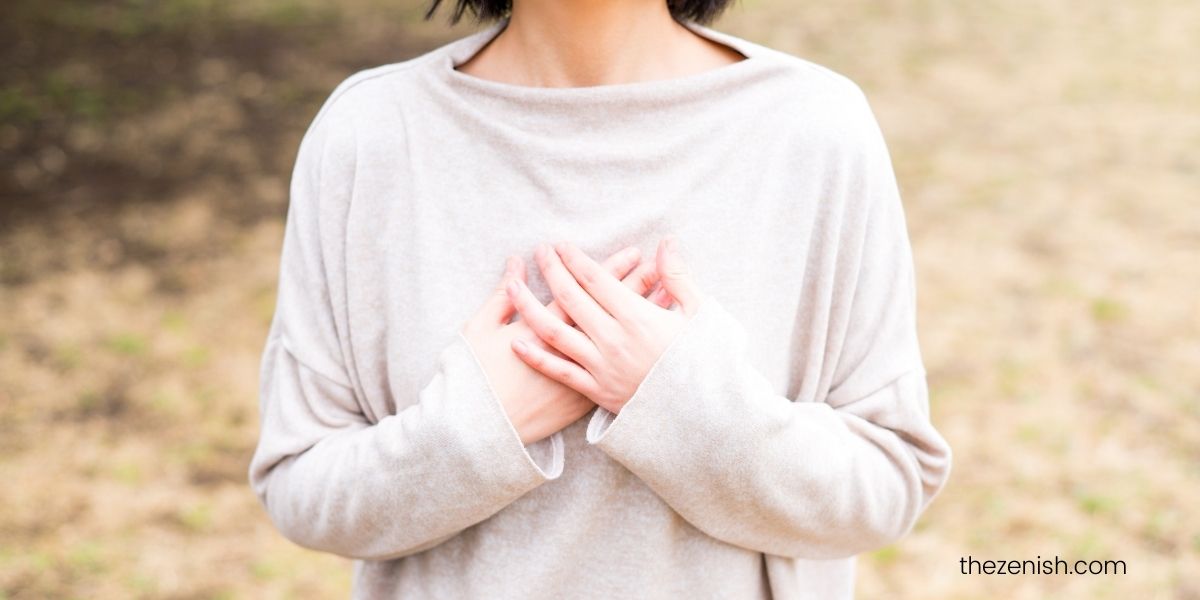
In this article, I’ll show you how to remove blackheads from your breast, what causes them, and how to prevent them from coming back.
Let’s get started!
| this post may contain affiliate links, which means if you purchase from one of these links, I may receive a small commission at no additional cost to you. |
What are blackheads and why do they appear on breasts?
Blackheads are a type of acne that form when your pores get clogged with dead skin cells, oil, dirt, and bacteria.
They look like small black dots on the surface of your skin.
Unlike whiteheads or pimples, blackheads don’t have a layer of skin covering them, so they get exposed to air and turn dark.
Blackheads can appear anywhere on your body where you have pores, including your face, back, chest, and breasts.
There are many factors that can cause blackheads on breasts, such as:
- Genetics: Some people are more prone to acne than others because of their skin type or family history.
- Hormonal fluctuations: Changes in hormone levels during puberty, pregnancy, menopause, or perimenopause can also cause acne by affecting your sebum production and skin cell turnover.
- Medications: Some medications, such as corticosteroids, thyroid hormones, or antibiotics can cause acne as a side effect.
- Exercise hygiene: Sweating a lot during exercise can clog your pores if you don’t shower or change your clothes right away.
- Hair products: If you have long hair that touches your chest or breasts, it can transfer oil or dirt to your skin and cause blackheads.
- Sun exposure: Too much sun exposure can damage your skin and make it more prone to acne by drying it out and increasing inflammation.
- Body lotions and creams: Some body lotions and creams can be too thick or greasy for your skin and clog your pores.
How to get rid of blackheads on breasts: home remedies
If you have mild or occasional blackheads on breasts, you may be able to treat them at home with some natural remedies.
Here are some of them:
- Cleanse: The first step to getting rid of blackheads is to cleanse your skin twice a day with warm water and a gentle cleanser that removes oil without stripping your skin. You can use the same cleanser that you use for your face if it works well for you.
- Exfoliate: The next step is to exfoliate your skin once or twice a week with a gentle scrub or a chemical exfoliant that contains salicylic acid (BHA) or glycolic acid (AHA). These ingredients help dissolve the dead skin cells and oil that clog your pores and cause blackheads. Be careful not to over-exfoliate or scrub too hard as this can irritate your skin and make it worse.
- Steam: Another helpful method to get rid of blackheads on your breasts is to steam your skin after cleansing. This will help open up your pores and soften the blackheads, making them easier to remove. You can use a facial steamer or simply place a warm, damp towel over your chest for 10 minutes.
- Extract: After steaming, you can try to gently squeeze out the blackheads with your fingers or a comedone extractor tool. Make sure your hands and the tool are clean and sanitized before doing this. Apply gentle pressure on both sides of the blackhead until it pops out. Don’t force it or dig into your skin as this can cause scarring or infection.
- Tone: After extracting, you can apply a toner that contains witch hazel, tea tree oil, or apple cider vinegar to your skin. These ingredients have antibacterial and anti-inflammatory properties that can help prevent infection and reduce redness.
- Moisturize: The last step is to moisturize your skin with a lightweight, oil-free lotion or gel that won’t clog your pores. You can also look for products that contain niacinamide, zinc, or green tea, which can help regulate sebum production and soothe inflammation.
How to get rid of blackheads on breasts: products
If home remedies don’t work for you or you have more severe or persistent blackheads on your breasts, you may need to use some over-the-counter (OTC) or prescription products to treat them.
Here are some of the best products for getting rid of blackheads on breasts:
1. CeraVe Foaming Facial Cleanser
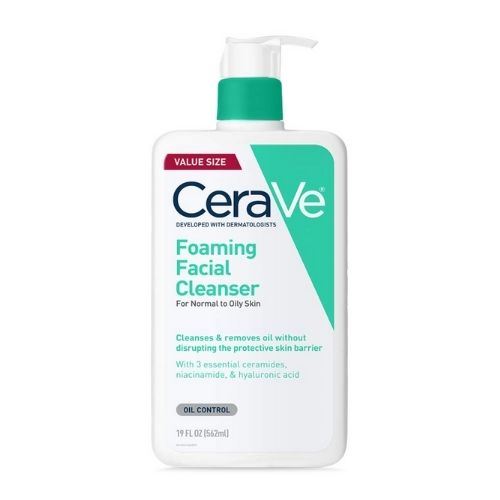
If you’re looking for an effective fragrance-free cleanser to help get rid of the blackheads on your breast, this one is amazing.
This foaming facial cleanser doesn’t just wash away dirt, it also soothes and replenishes skin with 3 essential ceramides (1, 3, 6-II).
It also contains hyaluronic acid so skin stays moist without getting too oily.
It also contains niacinamide which is anti-inflammatory and great for calming the gentle skin tissue of your breasts.
Along with helping to smooth away debris on the skin, it also minimizes irritation & dryness. Buy it online from Amazon.
2. Foreo LUNA™ Mini 2
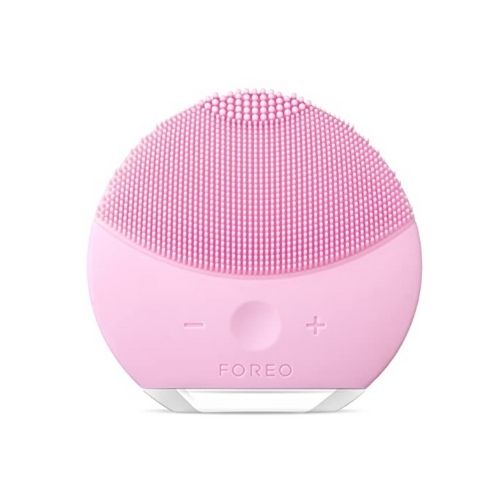
The LUNA Mini 2 from Foreo is an electric facial cleanser that removes dirt, oil, and impurities in just one minute.
You can achieve a deep clean with sonic waves to help remove blackheads from under your breasts.
In the same way, an electric toothbrush can help you clean your teeth, a cleansing device can make you more efficient when it comes to cleaning your skin.
The Foreo LUNA Mini 2 is a great option for this.
Unlike other devices, it’s lightweight & easy to use.
The soft silicone bristles will give you a deep clean while eliminating bacteria and preventing breakouts.
Buy it online from SkinStore, BeautyBay or Amazon.
3. Paula’s Choice Skin Perfecting 2% BHA Liquid
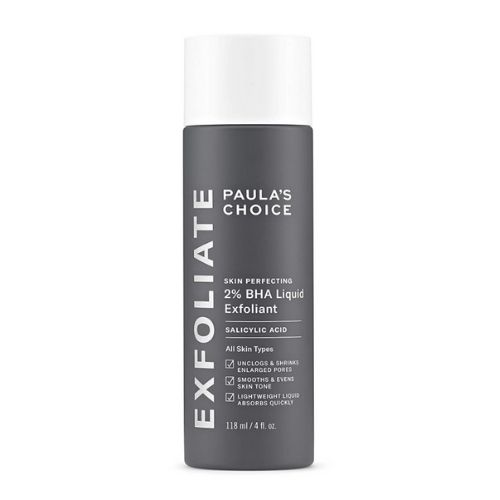
This popular, gentle chemical exfoliator contains salicylic acid, a BHA that is able to work deep into pores to break up any clogging debris.
It is often used by individuals with acne-prone skin because of its ability to treat the root cause of the problem.
4. Paula’s Choice RESIST Advanced Pore-Refining Treatment 4% BHA
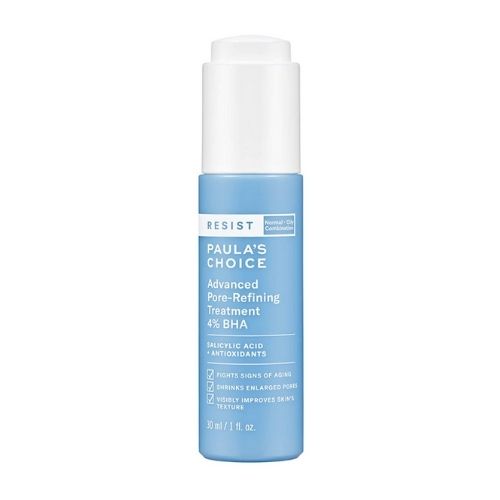
This is a sister product of the Skin Perfecting 2% BHA Liquid and contains 4% salicylic acid to combat stubborn blackheads.
It can dry out skin, so it’s best for people to start really slowly with the product and increase usage over time.
If you have mild acne, it would be helpful to use the Skin Perfecting 2% BHA Liquid every other day.
It will help you avoid dryness.
When this isn’t enough, come back to this 2% BHA Liquid that you can use every day or twice a day if necessary.
5. The Ordinary Granactive Retinoid 2% in Squalane
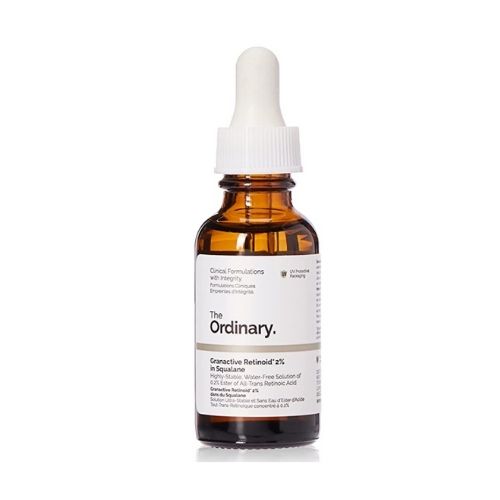
Using a mild retinoid can help in more severe cases of breast blackheads.
The Ordinary has a series of promising products, including their Granactive Retinoid 2%, which is the mildest option.
If you want to graduate to a stronger formulation, try their Granactive Retinoid 5% or Retinol 1% in Squalane.
Buy it online at SkinStore or BeautyBay.
How to prevent blackheads on breasts
The best way to prevent blackheads on breasts is to keep your skin clean and balanced.
Here are some tips to prevent blackheads on breasts:
Wash your bras regularly
Your bras can accumulate sweat, oil, dirt, and bacteria that can transfer to your skin and cause blackheads.
Make sure you wash your bras after every wear or at least once a week with a gentle detergent.
Wear breathable fabrics
Avoid wearing tight-fitting or synthetic fabrics that can trap heat and moisture on your skin and clog your pores.
Opt for loose-fitting or cotton fabrics that allow your skin to breathe.
Healthier diet
Eat more foods that are rich in antioxidants, omega-3 fatty acids, fiber, and probiotics, such as fruits, vegetables, nuts, seeds, whole grains, yogurt, and fish.
These foods can help reduce inflammation, balance your hormones, and improve your gut health.
See a dermatologist
If you have severe or persistent blackheads on breasts that don’t respond to home remedies or OTC products, you may need to see a dermatologist for professional advice and treatment.
A dermatologist can prescribe stronger medications or perform procedures to remove blackheads on breasts, such as:
- Topical retinoids: These are creams or gels that contain vitamin A derivatives that can help unclog your pores and prevent blackheads from forming. They can also improve your skin texture and tone. Some examples are tretinoin, adapalene, and tazarotene.
- Oral antibiotics: These are pills that can help kill the bacteria that cause acne and reduce inflammation. They are usually used for moderate to severe acne that doesn’t respond to topical treatments. Some examples are doxycycline, minocycline, and erythromycin.
- Oral contraceptives: These are pills that contain synthetic hormones that can help regulate your natural hormone levels and prevent acne caused by hormonal fluctuations. They are usually used for women who have acne along with irregular periods, excess hair growth, or ovarian cysts. Some examples are ethinyl estradiol with norgestimate, drospirenone, or desogestrel.
- Isotretinoin: This is a powerful oral medication that can treat severe or resistant acne by shrinking your sebaceous glands and reducing your oil production. It can also prevent scarring and improve your skin appearance. However, it has many serious side effects and risks, such as birth defects, depression, liver damage, and increased cholesterol. It is only prescribed by a dermatologist after other treatments have failed and are under strict monitoring and regulations.
- Chemical peels: These are procedures that involve applying a chemical solution to your skin that causes it to peel off and reveal new skin underneath. They can help remove blackheads on breasts by exfoliating your skin and clearing your pores. They can also improve your skin texture, tone, and color. They are usually done by a dermatologist or a licensed esthetician in a clinic or a spa.
- Microdermabrasion: This is a procedure that involves using a handheld device that sprays tiny crystals onto your skin and then vacuums them up along with the dead skin cells and debris. It can help remove blackheads on breasts by exfoliating your skin and clearing your pores. It can also improve your skin texture, tone, and color. It is usually done by a dermatologist or a licensed esthetician in a clinic or a spa.
- Laser therapy: This is a procedure that involves using a high-intensity light beam to target and destroy the bacteria that cause acne and reduce inflammation. It can help remove blackheads on breasts by killing the bacteria and shrinking your sebaceous glands. It can also improve your skin texture, tone, and color. It is usually done by a dermatologist in a clinic.
FAQs
Why am I suddenly getting pimples on my breasts?
Just like the pores on our face can become clogged with sweat, dirt, dead skin cells, sebum, or bacteria.
Your breasts also have pores that can become clogged. When this happens it could turn into a blackhead or pimple.
Blackheads are formed when a pore becomes clogged with debris like dirt, bacteria, dead skin cells, sebum, and sweat.
The characteristic dark color isn’t necessarily from dirt but the result of the debris that gets exposed to oxygen.
One of the main causes of blackheads is your own skin type and genetics.
Certain hormonal changes in the body, such as puberty, pregnancy, menopause, and perimenopause can also lead to blocked pores.
The use of oral contraceptives is another common cause.
Some of the skincare products you’re using can also cause blackheads.
Thick lotions and certain oils can clog the pores on your breasts, leading to blackheads and other breakouts.
Other products like makeup, body oils, or self-tanners may lead to blackheads too.
Is it normal to have pimples on your breasts?
It’s completely normal to experience pimples/clogged pores on your breasts and the surrounding area.
However, if you’re breastfeeding, clogged pores or clogged ducts could potentially develop into mastitis.
Mastitis is when the breast tissue becomes inflamed and sometimes infected.
This can result in swollen breasts and quite a lot of pain.
If you think you might have mastitis, reach out to a medical professional.
How long does chest acne last?
How long a pimple lasts can vary from person to person, with some it may take up to six weeks for a pimple to go away completely.
For most people, they may only last a few days.
Just resist the temptation to pop it.
You don’t want to introduce more bacteria into your pores or increase the likelihood of infection.
Popping a pimple also increases the chance of scarring.
Is it bad to pop pimples on your breast?
Do your best not to pop your pimples, especially ones on or around your breast.
Pimples contain bacteria, and popping them may result in that bacteria spreading.
This could potentially leave you with an infection or it might cause additional pimples to form.
There’s also a higher risk of scarring which can have emotional repercussions in the long run.
Why do I have blackheads on my nipples?
Blackheads on nipples aren’t uncommon and are usually harmless.
They’re caused by the same factors as blackheads on other parts of your body, such as excess oil, dead skin cells, dirt, and bacteria clogging your pores.
However, sometimes they may be confused with other conditions that affect the nipples, such as Montgomery glands (mall bumps around the nipples that secrete oil to lubricate and protect them during breastfeeding) or sebaceous filaments (thin strands of sebum and dead skin cells that fill the pores on your nose, chin, forehead, and nipples).
Both are normal and not indicative of infection or disease.
If you’re not sure whether you have blackheads on your nipples or something else, you can consult a doctor for diagnosis and treatment.
How do I get rid of blackheads under my breasts?
Blackheads under the breasts are common and usually harmless.
These are caused by the same factors as blackheads on other parts of the body, such as excess oil, dead skin cells, dirt, and bacteria clogging the pores.
However, they may be more difficult to treat because of the moist and warm environment under your breasts.
To get rid of blackheads under the breasts, you can follow the same steps as for blackheads on breasts:
Cleanse
Exfoliate
Steam
Extract
Tone
Moisturize
However, you may need to pay more attention to keeping the area dry and clean to prevent infection and irritation.
You can also use some additional tips to prevent blackheads under breasts:
Wear breathable fabrics
Change your bra regularly
Use talcum powder or cornstarch to absorb sweat
Avoid using heavy or greasy lotions or creams
How do I prevent blackheads on breasts from coming back?
To prevent blackheads from recurring on your breasts, you should maintain a good skincare routine and good personal hygiene.
Here are some tips to help you prevent blackheads on your breasts:
Wash your breasts twice a day with a gentle cleanser
Exfoliate your breasts once or twice a week with a gentle scrub or a chemical exfoliant
Moisturize your breasts with a lightweight, oil-free lotion or gel
Use products that contain ingredients that can help regulate sebum production and soothe inflammation, such as niacinamide, zinc, or green tea
Avoid using products that can clog your pores or irritate your skin, such as thick moisturizers, oils, makeup, or self-tanners
Wash your bras and shirts regularly with a gentle detergent
Wear loose-fitting or cotton fabrics that allow your skin to breathe
Shower or change your clothes after sweating
See a dermatologist if you have severe or persistent blackheads on your breasts that don’t respond to home remedies or OTC products
When to see a doctor
Most blackheads on breasts are harmless and can be treated at home with some simple steps and products.
However, sometimes they may be a sign of an underlying condition or infection that requires medical attention.
You should see a doctor if you have:
- Severe or persistent blackheads on breasts that don’t improve with home remedies or OTC products
- Blackheads on breasts that are painful, swollen, red, or bleeding
- Blackheads on breasts that are accompanied by other symptoms, such as fever, chills, nausea, vomiting, or fatigue
- Blackheads on breasts that look like warts, moles, cysts, or tumors
- Blackheads on breasts that change in size, shape, color, or texture
A doctor can diagnose the cause of the blackheads on your breasts and prescribe the appropriate treatment for you.
They can also perform procedures to remove blackheads on breasts if necessary.
Final thoughts
Blackheads on the breasts are a common and usually harmless type of acne that can occur anywhere on the body.
They are caused by a buildup of excess oil, dead skin cells, dirt, and bacteria that clog the pores.
They can be treated at home with some simple steps and products that cleanse, exfoliate, and moisturize your skin.
You can also prevent blackheads on breasts by keeping your skin clean and balanced and avoiding factors that can trigger acne.
However, if you have severe or persistent blackheads on your breasts that don’t respond to home remedies or OTC products, you should see a doctor for diagnosis and treatment.
